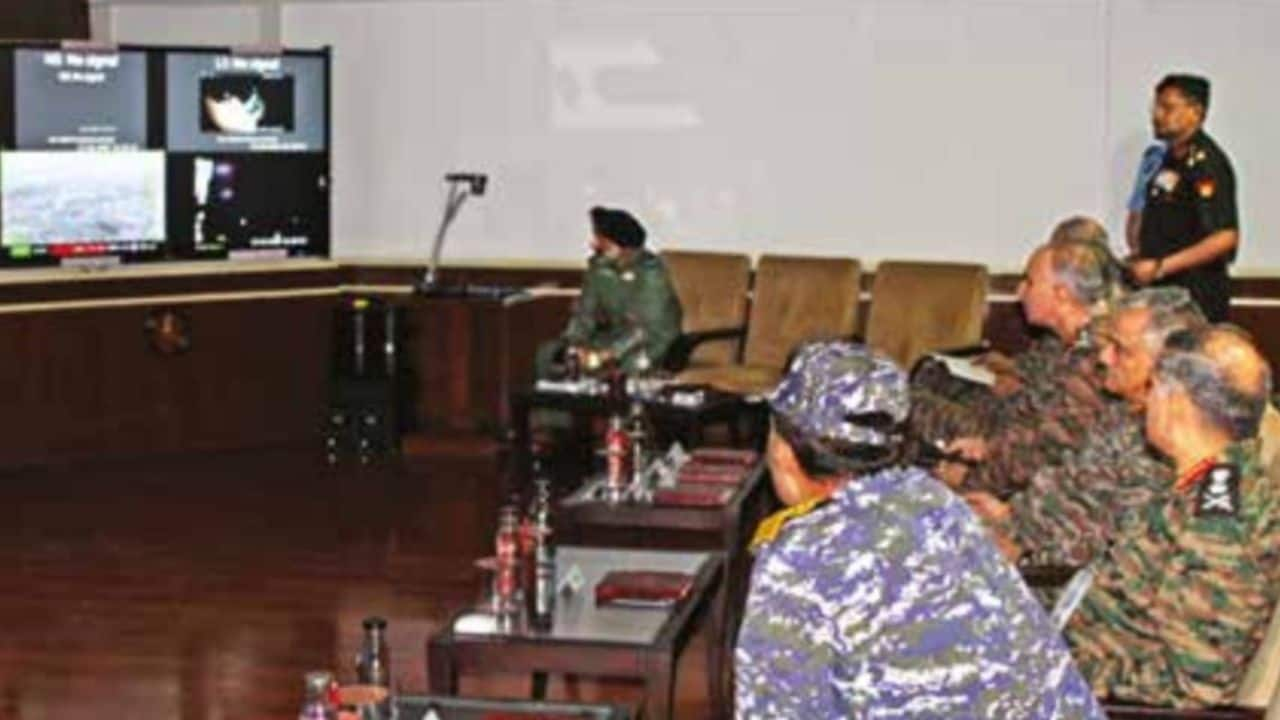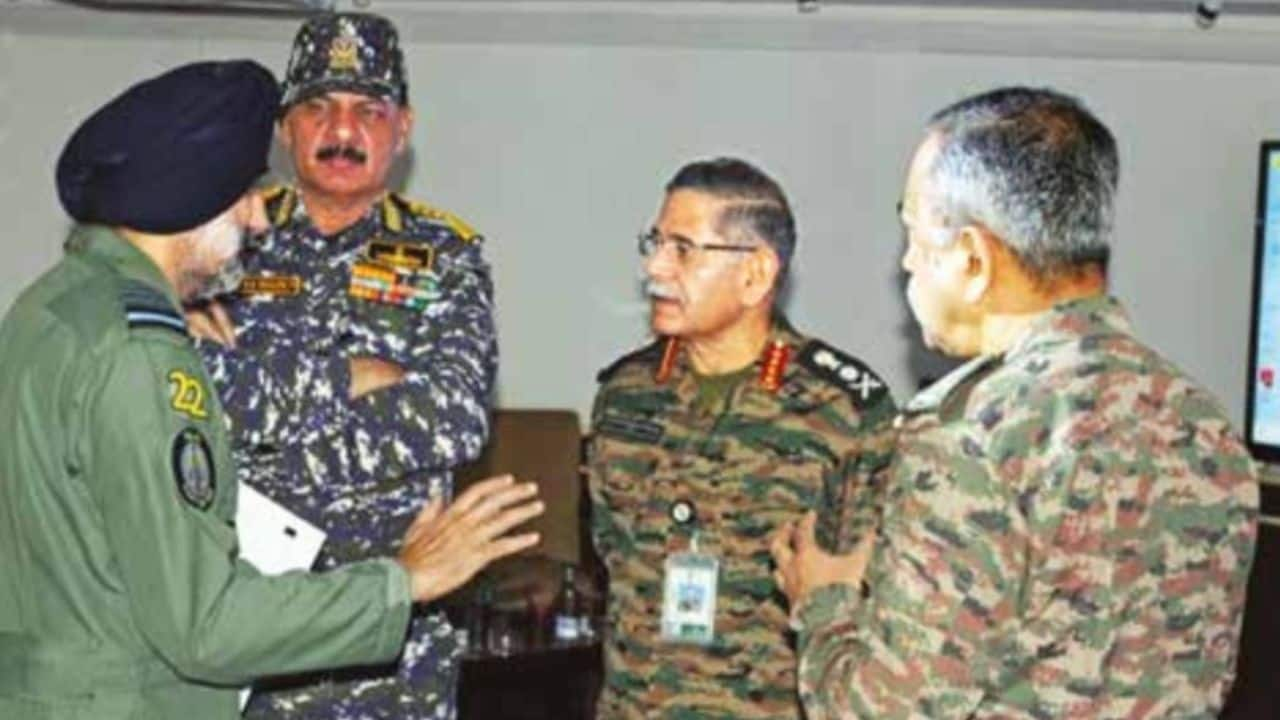
The Indian Army has released the first images showing top military leadership comprising the Army, Navy and Air Force Chiefs coordinating ‘Operation Sindoor’ in the early hours of 7 May.
The photos, captured at 1:05 AM in the Indian Army Headquarters Operations Room in New Delhi, offer a rare glimpse into the real-time strategic oversight behind the high-stakes mission.
These images include:
- Chief of Army Staff General Upendra Dwivedi,
- Air Chief Marshal AP Singh, and
- Chief of Naval Staff Admiral Dinesh K Tripathi
They are joined by senior officials from all three services, overseeing the coordinated strikes.

Operation Sindoor: A Precision Strike Against Terrorism
India launched Operation Sindoor in direct response to the 22 April terror attack in Pahalgam, which killed 26 people.
Armed with concrete intelligence pointing to cross-border involvement, Indian security forces executed a series of coordinated precision strikes targeting terrorist camps across Pakistan and Pakistan-occupied Kashmir (PoK).
The mission, initiated on the night of 6 May and continuing into 7 May, successfully neutralised over 100 terrorists, with Indian forces ensuring zero civilian casualties.
High-Value Terror Camps Targeted
Indian strikes focused on destroying infrastructure used by key terrorist organisations, including Lashkar-e-Taiba (LeT), Jaish-e-Mohammad (JeM), and Hizbul Mujahideen. Among the primary targets:
- Gulpur Camp (Kotli): A strategic Lashkar-e-Taiba base used to support militants in Rajouri and Poonch.
- Abbas Camp (Kotli): A facility dedicated to training LeT suicide bombers.
- Barnala Camp (Bhimber): Specialised in weapons training, IED-making, and jungle warfare.
The Indian Army confirmed that all targeted camps were critical nodes within the terror network and were operating with cross-border support.
Operation Backed By Robust Intelligence
Defence officials revealed that Operation Sindoor was the result of extensive intelligence gathering.
Military analysts had mapped terrorist movements, training routines, and logistical supply chains before recommending action.
Also Read: Dinesh Bhatia Meets PM Modi Ahead Of Brazil Posting
Armed with this intelligence, Indian forces launched the operation with surgical precision.

Officials emphasised that the planning phase was extensive, with Indian intelligence agencies working closely with the armed forces to eliminate the threat while minimising risk.
Ethical Conduct At The Heart Of The Operation
In a statement, the Army underlined that Operation Sindoor was carried out with a ‘strong emphasis on ethics and caution’.
Indian forces imposed strict internal restrictions to avoid collateral damage.

Every measure was taken to ensure that only terrorist targets were neutralised, reinforcing India’s commitment to international humanitarian norms.
Strategic Significance Under PM Modi’s Leadership
Under Prime Minister Narendra Modi’s leadership, India’s security apparatus has prioritised swift, decisive, and ethical responses to cross-border terrorism.
Operation Sindoor reasserted India’s zero-tolerance policy on terrorism. It also demonstrated the country’s growing precision and coordination in executing complex military missions.
The visual confirmation of India’s tri-services working seamlessly together serves as a reminder of the country’s enhanced operational capabilities under PM Modi’s strategic vision.
To read more such news, download Bharat Express news apps


















